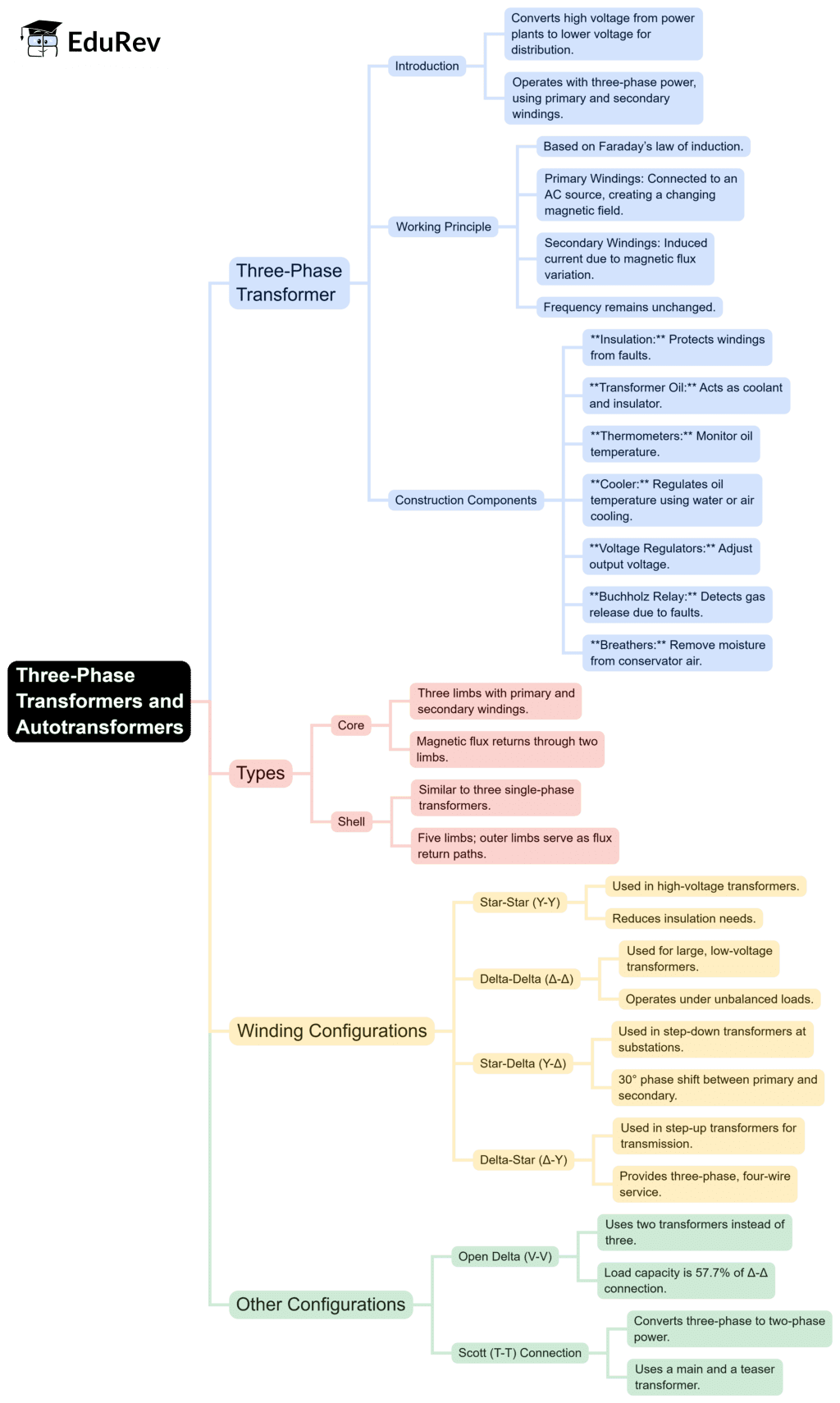Electrical Engineering (EE) Exam > Electrical Engineering (EE) Notes > Electrical Machines > Mind Map: Three Phase Transformers and Autotransformers
Mind Map: Three Phase Transformers and Autotransformers | Electrical Machines - Electrical Engineering (EE) PDF Download

The document Mind Map: Three Phase Transformers and Autotransformers | Electrical Machines - Electrical Engineering (EE) is a part of the Electrical Engineering (EE) Course Electrical Machines.
All you need of Electrical Engineering (EE) at this link: Electrical Engineering (EE)
|
19 videos|124 docs|25 tests
|
FAQs on Mind Map: Three Phase Transformers and Autotransformers - Electrical Machines - Electrical Engineering (EE)
| 1. What is the main difference between a three-phase transformer and an autotransformer? |  |
Ans. The main difference lies in their construction and operation. A three-phase transformer has separate primary and secondary windings, providing electrical isolation between the input and output. An autotransformer, on the other hand, has a single winding that acts as both the primary and secondary, with a portion of the winding common to both. This allows for a more compact design and improved efficiency, but it does not provide electrical isolation.
| 2. In what applications are three-phase transformers typically used? |  |
Ans. Three-phase transformers are commonly used in industrial and commercial applications where high power is necessary. They are employed in power distribution systems, large motor drives, and substations to step up or step down voltage levels. Their ability to handle large loads makes them suitable for applications in manufacturing plants, data centers, and other facilities requiring significant electrical power.
| 3. What are the advantages of using an autotransformer over a three-phase transformer? |  |
Ans. The advantages of using an autotransformer include reduced size and weight, improved efficiency, and lower costs. Since they use a single winding, autotransformers can be more compact and lightweight than traditional transformers. Additionally, they have lower copper losses due to less winding material and can be more economical for applications where electrical isolation is not a critical requirement.
| 4. Can an autotransformer be used in high-voltage applications? |  |
Ans. Yes, autotransformers can be used in high-voltage applications, but there are important considerations. While they can efficiently step up or down voltage levels, they lack electrical isolation, which can pose safety risks in some scenarios. Therefore, they are typically used in applications where isolation is not critical, and the design adheres to safety standards and regulations.
| 5. How do you determine the turns ratio in a three-phase transformer? |  |
Ans. The turns ratio in a three-phase transformer is determined by the voltage levels required at the primary and secondary sides. It is calculated by dividing the primary voltage by the secondary voltage. For example, if the primary voltage is 480V and the secondary voltage is 240V, the turns ratio would be 2:1. This ratio helps ensure that the transformer effectively steps up or steps down the voltage as needed in the electrical system.
Related Searches





















